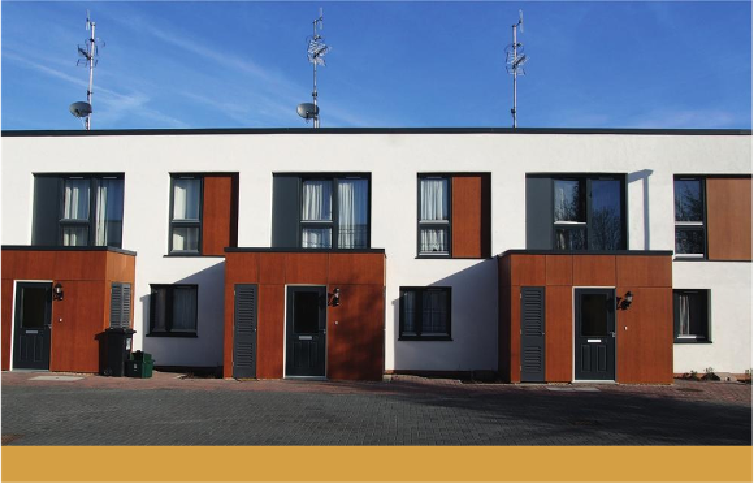Civil Engineering Reference
In-Depth Information
On large steel- or glulam-framed buildings, the frame usually sits inside the walls of the
building, not within the hempcrete. The racking system will then have little interaction
with the hempcrete and is likely to consist of diagonal frame members or steel ties.
On smaller builds of timber-frame construction, such as single dwellings or extensions, the
frame is likely to be encased within the hempcrete, and as such the racking provision must
not interfere with the vapour permeability and structural integrity of the hempcrete. For
this reason, the usual method of adding racking strength to timber frames - OSB or ply-
wood boards fixed to the frame within the wall build-up - is not suitable. Such boards, if
placed within the hempcrete, would cause a continuous vertical break midway in the mass
of hempcrete and thereby weaken the monolithic structure. Even if placed on the inside or
outside face of the wall, so as not to cause a break in the hempcrete, these boards are not
vapour permeable enough to be left in situ. Plywood, being layers of timber glued together,
is pretty much impermeable to moisture (and can easily be waterproofed with oil or resin).
OSB is somewhat vapour permeable, but not to the extent that it could be used within a
'breathable wall' build-up.
Social housing at Callowlands in Watford, built using a timber frame and cast-in-situ hempcrete.

Search WWH ::

Custom Search